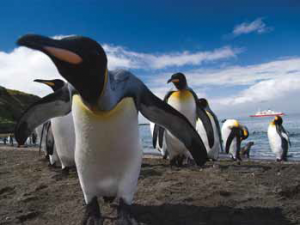 NO region in the world has had more spectacular tourism growth than the Antarctic – and yet no region is more heavily protected against the potential ravages of mass tourism. In the 1999-2000 cruising season, just shy of 14,000 people visited the Antarctic, which was by then beginning to open up to tourism on a mass scale, even though the first commercial trips had begun as far back as 1966.
NO region in the world has had more spectacular tourism growth than the Antarctic – and yet no region is more heavily protected against the potential ravages of mass tourism. In the 1999-2000 cruising season, just shy of 14,000 people visited the Antarctic, which was by then beginning to open up to tourism on a mass scale, even though the first commercial trips had begun as far back as 1966.
Last season, the number rose to around 36,200, yet it could have been so much more, if not for the activity of the International Association of Antarctic Tour Operators (IAATO) which in its selfgovernance has become a byword for responsible tourism, limiting numbers and keeping the impact on the environment to a minimum.
The Arctic is much more easily visited than the Antarctic, with land-based tourism possible in a number of countries, although most Australians visit the region on cruise or adventure ships.
Sujata Raman, A&K managing director, says the market for polar cruising is “extremely strong” and has been for some years.
“Our journeys sell out incredibly quickly, especially the top cabin categories. We are now taking goodwill deposits even before dates and prices for 2017 are confirmed, as space is so tight.
“The dollar does not seem to have had any noticeable impact, possibly because polar cruising is seen as a once-in-a-lifetime experience. Even long cruises such as the Northwest Passage are selling out.”
World Expeditions CEO Sue Badyari agrees that cost is rarely a consideration on polar journeys.
“Sales to both (poles) are consistent and not yet affected by the falling dollar,” she says. “This is partly due because a polar cruise is a bucket-list experience, so it’s less vulnerable to price fluctuations. There is a wide range of cruise durations and cabin classes, so price-driven travellers have options.”
Badyari says the diversity of the Arctic and Antarctic experiences mean that many clients book trips to both regions, sometimes multiple times, and one of the challenges for operators is to explain the differences.
“In the Arctic, for example, destinations including Spitsbergen, Greenland and the region known as the high Arctic all offer unique attractions, with varying landscapes, wildlife and flora. In the south, active itineraries are especially popular, with kayaking, snowshoeing, climbing, and camping overnight on the ice.”


